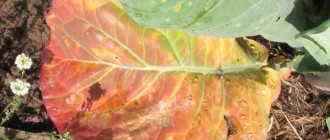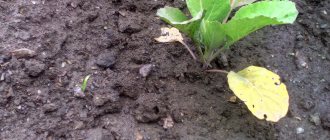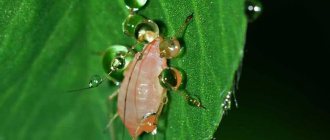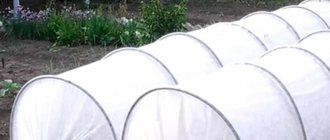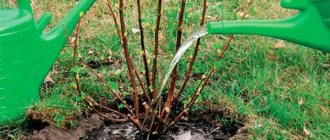Sometimes cabbage develops purple leaves, and this is an alarming sign that the development of the vegetable is abnormal. The reasons for their appearance lie in care errors, damage to the crop by diseases and pests, and a lack of nutrients in the soil. The problem can be fixed quickly, so it will not affect the yield in any way. Reviews from experienced gardeners will tell you what to do first and how to feed the plants.
Causes of purple leaves
Purple leaves form suddenly, so it is important for the gardener to react in time. If the control actions are taken correctly, the cabbage will turn green again, and its quality and beneficial substances contained inside will be preserved. But if there is no action, you can even ruin the crop and be left without a harvest at all, because sometimes purple leaves indicate damage by fungal infections.
Lack of nutrients
Experienced gardeners know that cabbage heads begin to turn blue when there is a lack of phosphorus compounds and nitrogen elements in the soil. At first, the lower leaves change color, but then the center of the rosette changes color. At the initial stage of cultivation, the vegetable actively gains green mass, so the need for nitrogen increases. When the head of cabbage begins to lay, around July, the need for phosphorus increases.
However, it also happens that the gardener periodically applied fertilizing with a mineral composition, but the leaves still turned blue.
This is due to unfavorable external conditions: in cloudy weather and low air temperatures, development slows down significantly, since beneficial substances are poorly absorbed. The reason for poor absorption of nutrients is the composition of the soil: if it is excessively loose, then the compounds do not stay long and are quickly washed out with watering and rain. Attention!
If at the beginning of cultivation only the central leaf vein changes color, and then the entire leaf turns blue, this is a sure sign that the plants do not have enough phosphorus.
Temperature violation
Cabbage often turns purple when its seedlings are planted in open ground. Due to sudden temperature changes, plants are stressed, so similar changes occur. If the gardener did not harden the bushes outside, then when planted in open ground the leaves will turn blue due to normal hypothermia. Moreover, in the future this significantly undermines the immunity of the crop: cabbage becomes susceptible to most diseases and pests and grows inactive. Before planting the plants outside, the box with seedlings is hardened: left for several hours in the open air, gradually increasing the time daily.
How to grow cauliflower: planting seeds, care and harvesting
DIY cauliflower seeds: painstaking work to obtain high yields!
When to harvest cabbage from the garden for storage for the winter in 2020
Why cabbage leaves turn yellow and dry - we eliminate the reasons
Impact of pests and diseases
One of the main reasons why blueness occurs is a dangerous fungal disease - black leg. If it affects the seedlings, then it will be very difficult to save the vegetables: the root system is affected and cannot be restored. If adult plants are affected by a fungal infection, then they can still be saved if they are treated with preparations containing colloidal sulfur. Potassium permanganate helps in reviving the culture: dilute a weak solution and irrigate the plantings, while treating not only the leaves, but also the roots. The liquid consumption rate for each plant is at least 1 liter.
Purple leaves appear on cabbage when vegetables are attacked by pests, such as cabbage flies. The crop may even die if measures are not taken in time and the insect and its larvae are not exterminated from the site. This can be done with the help of insecticides: Iskra, Karbofos, Topaz. They must be used in strict accordance with the instructions.
Attention! When diluting, it is necessary to use protective equipment: gloves and goggles, since chemicals have a negative effect on the skin.
Stress
Another common reason for discoloration lies in banal care. If most of the young cabbage has already acquired a purple tint, then there is nothing wrong with that yet. If you restore proper care, after 2-3 weeks it will turn green again. The change in color occurs due to:
- abundant watering. When the soil is noticeably waterlogged, this negatively affects the root system;
- hypothermia. Night frosts inhibit the development of vegetables;
- land quality. The land was not cultivated before planting.
Folk remedies and mineral fertilizers will help correct the situation.
Why do cauliflower leaves turn yellow?
A disease associated with yellowing of seedling leaves is called Fusarium wilt. This is a fungal disease that affects not only seedlings, but also the vegetable itself planted in the ground. Without treatment, ¼ of the crop dies.
The signs of the disease are as follows:
- leaves change color to yellow-green,
- they lose turgor (elasticity) and fade,
- the leaf blade is not completely affected, in some places the color remains green,
- a ring of dark brown vessels is visible on the stem in cross-section,
- the central rosette remains, the lower leaves fall off.
The processing instructions suggest removing all diseased seedlings. In the autumn, it is necessary to disinfect the soil, since the microorganism remains in the ground for a long time. At home, prepare copper sulfate using 5 g of the product per 10 liters of water and treat the infected areas.
READ MORE: Tomato Palmyra: description and characteristics of the variety, its yield with photos
Not every vegetable grower will answer the question why cauliflower leaves turn yellow or why the vegetable suddenly turns purple. But there are two most common reasons:
- Fusarium wilt, when a fungal infection enters the plant through the roots. At first, the leaf blade turns yellow in places and then falls off. The disease actively spreads in hot summers. The main method of control is to change the “place of residence” of cabbage for 5 years.
- Consequences of the pest – cabbage fly. It overwinters in the soil and in the spring lays eggs near the roots of cruciferous plants. The larvae burrow into the root on which they feed. This is where they pupate. This inhibits the growth of the crop for three weeks, and in case of severe infection causes death.
Treatment of a vegetable with folk remedies for cabbage fly involves special treatment against the “invisible enemy”. The larvae are found in the soil and roots, so getting rid of them is not so easy: spraying the leaves will not bring the desired results.
You need to act in the spring, when the fly has just laid eggs. To destroy it, the ground around the vegetable is treated with a mixture of naphthalene and sand (1:7) or tobacco dust with lime (1:1). For 1 sq. m, 300 g of mixture is consumed.
It acquires a purple color for the same reasons as the white cabbage. Lack of phosphorus in the soil is the main reason why cauliflower turned purple. Typically, other crops that are grown in poor soils also get this color.
How to save the harvest
If the cabbage has turned blue due to a lack of nutrients, you must feed the plantings in the near future. For this use:
- superphosphate. For 10 liters of water you will need 5 tbsp. dry matter. One plant requires approximately 500-700 ml of liquid solution. You can use double or regular superphosphate;
- bone flour. It contains a large amount of phosphorus. To prepare the watering solution, dissolve tsp. substances in 10 liters of water. Leave the mixture for several hours until the flour is completely dissolved, then pour it under the root;
- liquid mullein. Dilute cow manure with water in a ratio of 1:10, then let it sit for a day and water the plantings at the roots.
In the case when cabbage seedlings are simply frozen due to cold snaps at night, they can be covered with special materials such as spunbond or agrofibre at night. Cover the bed with plantings with material, so the crop can withstand even significant nighttime cold snaps down to minus 10 degrees and below. In addition to frost, spunbond and agrofibre provide excellent protection from wind gusts, hail and snow.
If the plants are affected by a fungal infection, then the plantings are treated with chemicals Fundazol (15-20 g per 10 l) or Planriz (35-50 ml per 10 l). Only damaged leaves need to be sprayed. You can treat the heads of cabbage with colloidal sulfur (10 g per 10 l). If after 2 weeks from the moment of treatment it is not possible to revive the plantings, then it is better to dig them up and burn them so that the disease does not spread to healthy crops.
We treat diseases and get rid of parasites
“Black leg” is considered a fungal disease; it is dangerous for cabbage at any stage of growth: it affects both seedlings and a fully formed adult head of cabbage. The presence of a “black leg” is determined by the root collar, where black grooves can be found. Fungal spores spread well in weather with high humidity, as well as in acidic soils.
To get rid of the disease at the very initial stage, you need to use a solution of potassium permanganate. You should take 1 g of potassium permanganate 1% and dissolve it in 150 ml of water. The resulting mixture must be left for 5 hours, then watered over the cabbage. For one plant root you will need a liter of potassium permanganate solution.
Preventive methods
To avoid having to treat cabbage and worry about why purple leaves appear, it is enough to follow simple rules when growing vegetables:
- choose the right cabbage variety. It is preferable to grow those varieties that are resistant to diseases and low temperatures;
- select the soil. Cabbage does not grow well in acidic soil, but loamy, sandy soil is suitable for it. If the soil on the site gives an acidic reaction, then before planting the soil must be limed to neutralize excess acid;
- Fertilizers are regularly applied, not only based on phosphorus, but also with an organic or mineral composition;
- periodically inspect plants at least twice a week for infection or discoloration;
- hardening of young seedlings before transplanting outside;
- Maintain regular watering and maintain humidity up to 80%.
On a note! After transplanting cabbage seedlings into open ground, fertilizers can be applied only after a couple of weeks.
What is dangerous for landings?
Pests and diseases are dangerous for cabbage. The cruciferous flea beetle can completely destroy cabbage seedlings and seedlings if protective measures are not taken.
The cabbage fly causes enormous harm, the larvae of which penetrate the roots or stems of cabbage and penetrate the passages. The heads of cabbage then wither and disappear. A fungal disease, such as clubroot, affects the root system of cabbage, the stem becomes thin, bends, and then dies.
Eliminating the effects of stress
Cabbage, like any plant, is subject to stress when conditions change. First, you should analyze the changes that appeared while caring for the plant: maybe the appearance of a purple color or blue color on the foliage is caused by a sharp cold snap or frequent watering of the plant? You can protect cabbage from cold: snow, hail by covering it with spunbond insulating material. If there is no covering material, then the soil should be mulched with peat or sawdust.
Overmoistening the soil can also cause cabbage leaves to turn blue. Prolonged rainfall during the summer growing season can contribute to stress. On such days there is no need to water; soil loosening should be increased. You can make narrow furrows to drain excess water.
Experience and skill in growing cabbage seedlings
At home, beginning gardeners often fail to grow seedlings. Over time, mistakes are discovered that were previously made by accident. Mastery and skill appear. Nature is revealing more and more secrets. We are developing our own method that guarantees results.
At first, a window frame set to ventilation mode, a draft, or a cup of water that, out of habit, is constantly left nearby, may interfere with harvesting a large harvest.
Some sprouts may die due to the use of planting containers without drainage holes at the bottom or due to uneven watering.
If you immediately respond to negative symptoms, many cabbage seedlings, the strongest ones, will still grow. It will be clear what to do next, what part of the bed to additionally sow. Planting young, strong shoots will become a truly important, memorable event.
